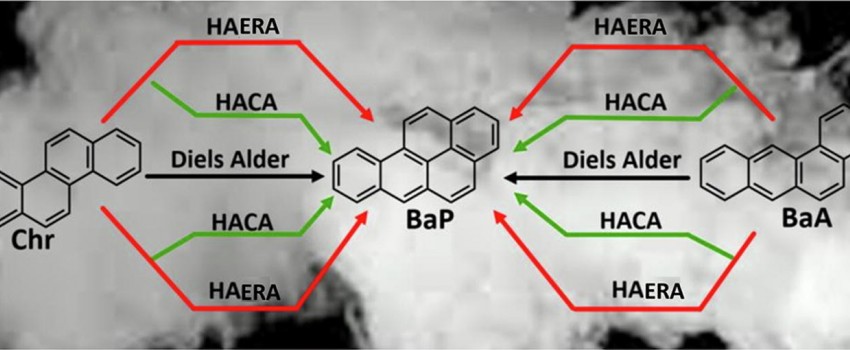Theoretical investigation of benzo(a)pyrene formation
A B S T R A C T
Polycyclic aromatic hydrocarbons (PAH) are harmful chemicals emitted to the environment by incomplete
combustion. As the aromatic structure grows, the carcinogenic effect increases, and thus, to understand their
formation mechanisms is crucial. In this work, new reaction pathways leading to benzo(a)pyrene, a PAH with
well-known carcinogenic effects, were explored by using DFT methods. Starting from chrysene or benzo(a)
anthracene, three types of reaction mechanism were studied: hydrogen abstraction acetylene addition (HACA),
hydrogen abstraction ethynyl radical addition (HAERA) and Diels-Alder (DA) processes. HAERA was the most
and DA was the least exergonic. A deeper understanding of benzo(a)pyrene formation achieved.
